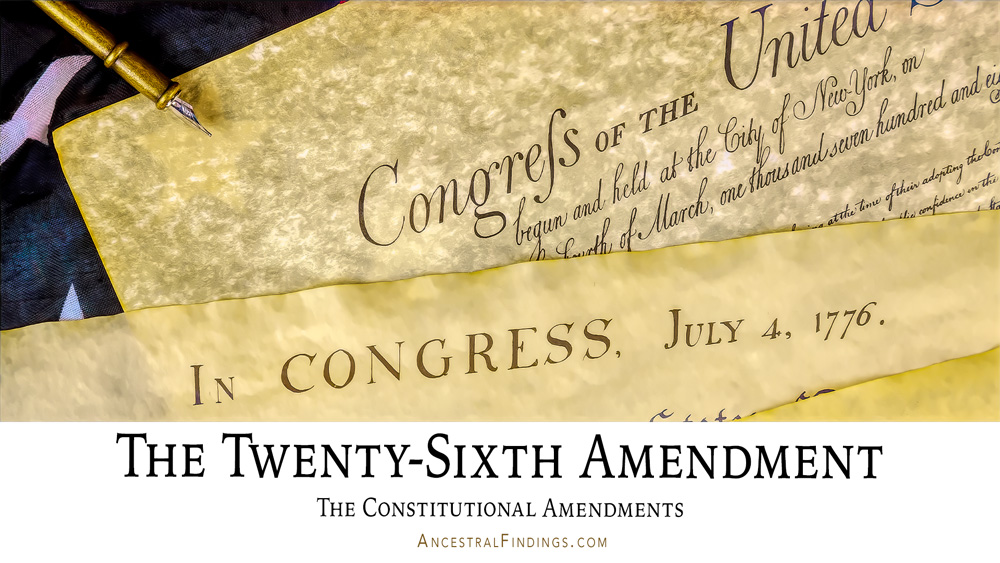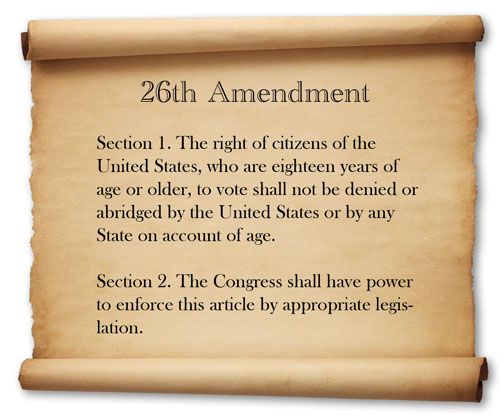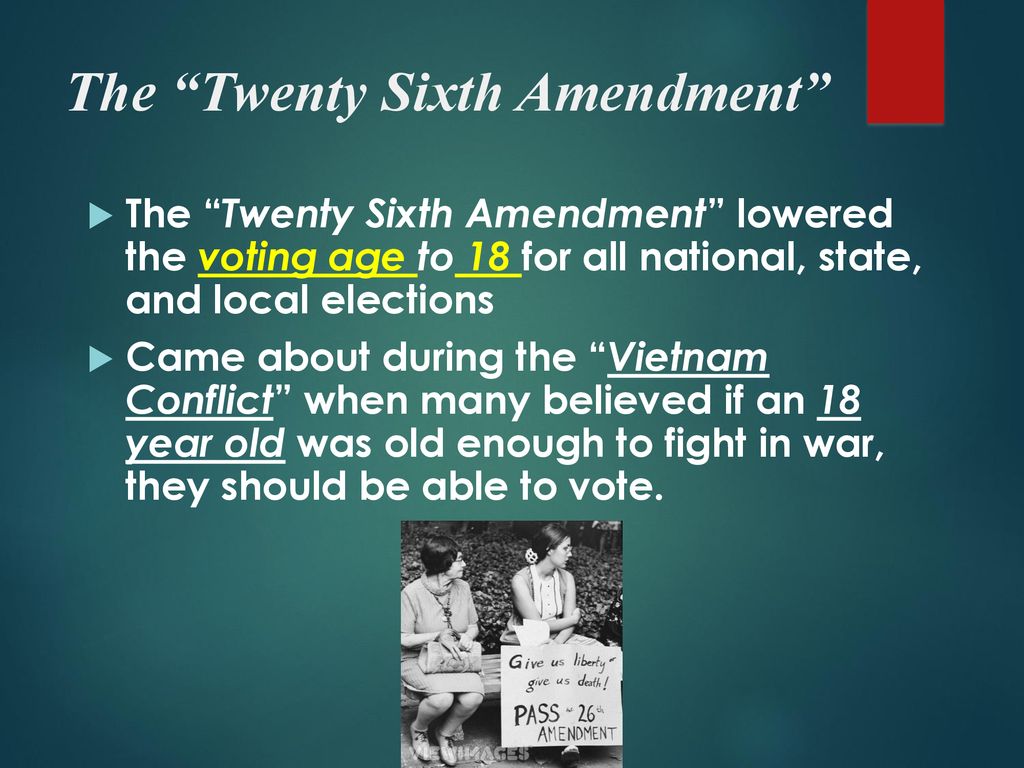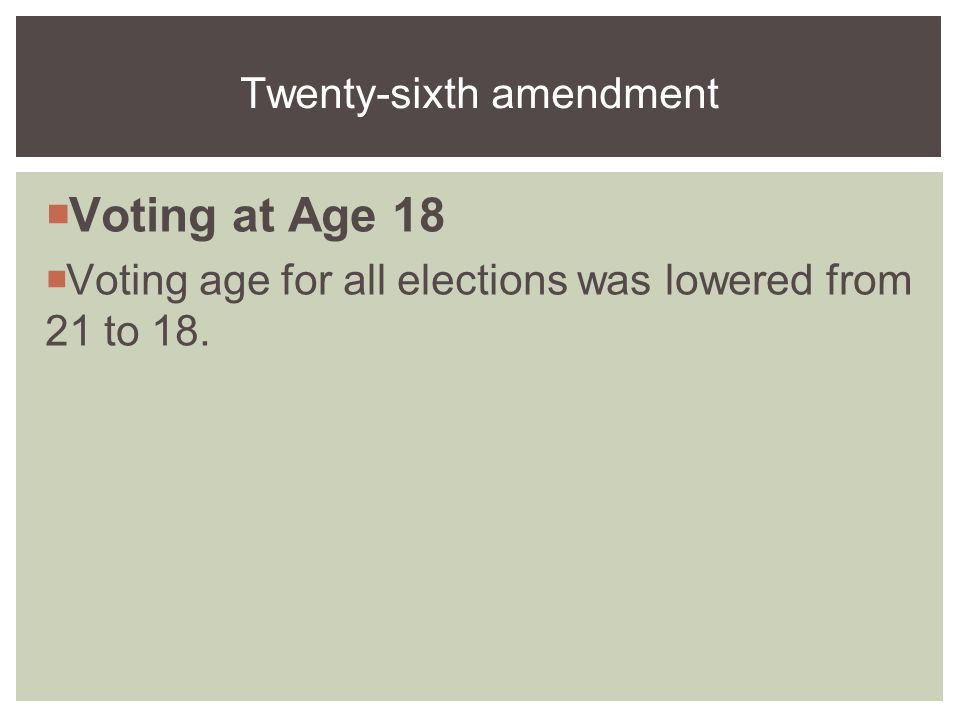Which Statement Is True Regarding The Twenty-sixth Amendment

The right to vote, a cornerstone of American democracy, has been a battleground for expansion and enfranchisement throughout the nation's history. At the heart of contemporary discussions about civic participation often lies the Twenty-sixth Amendment, ratified in 1971. Its passage marked a significant shift in the nation's understanding of citizenship and responsibility.
The pivotal question is: Which statement accurately reflects the essence and impact of the Twenty-sixth Amendment? Understanding the true meaning of this amendment requires a careful examination of its text, its historical context, and its lasting implications for American society.
Understanding the Twenty-sixth Amendment
At its core, the Twenty-sixth Amendment is remarkably simple: "The right of citizens of the United States, who are eighteen years of age or older, to vote shall not be denied or abridged by the United States or by any State on account of age." This amendment effectively lowered the national voting age from 21 to 18.
However, its implications extend far beyond this straightforward declaration. It reshaped the electorate, influenced political discourse, and continues to spark debates about youth engagement in civic life.
The Genesis of the Amendment
The movement to lower the voting age gained momentum during the Vietnam War. The argument was potent: if 18-year-olds were old enough to be drafted and fight for their country, they were certainly old enough to vote for its leaders.
This "old enough to fight, old enough to vote" slogan resonated deeply, encapsulating a sense of fairness and democratic accountability. Numerous political figures and activist groups championed the cause, pushing for federal action.
Initially, Congress attempted to lower the voting age through legislation. However, the Supreme Court ruled in Oregon v. Mitchell (1970) that Congress only had the power to set the voting age in federal elections, not state and local ones. This created a complex, bifurcated system that many deemed impractical.
The Supreme Court's decision ultimately paved the way for the Twenty-sixth Amendment. A constitutional amendment was seen as the only definitive way to ensure a uniform national voting age.
Key Provisions and Impact
The amendment's language is concise and unambiguous. It explicitly prohibits both the federal government and individual states from denying or limiting the right to vote based on age for citizens 18 and older.
The immediate impact was the enfranchisement of millions of young Americans. This dramatically expanded the electorate, giving young people a stronger voice in the political process.
The amendment also prompted states to update their election laws and procedures to accommodate the new voting age. This included revising voter registration processes and educating newly eligible voters about their rights and responsibilities.
Misconceptions and Clarifications
One common misconception is that the Twenty-sixth Amendment automatically guarantees high voter turnout among young people. While it removes the age barrier, it doesn't address other factors that influence voter participation, such as socioeconomic status, education level, and engagement in political campaigns.
"The right to vote is precious, almost sacred. It gives citizens power. The Twenty-Sixth Amendment gave that power to young people." - A statement reflecting the significance of the amendment.
Another point to clarify is that the amendment doesn't eliminate all age-related requirements for certain positions. The qualifications for holding public office, for example, may still include minimum age requirements based on the responsibilities and authority associated with the role.
Examining Different Perspectives
While the Twenty-sixth Amendment enjoys broad support, some critics have raised concerns about the political implications of lowering the voting age. Some argue that younger voters are less informed about political issues and more susceptible to fleeting trends.
However, research consistently demonstrates that young voters, when engaged, bring fresh perspectives and priorities to the political landscape. Their participation can help shape policy debates and hold elected officials accountable.
Other perspectives highlight the importance of civic education in fostering informed and responsible voting habits among young people. Investing in programs that teach young citizens about government, history, and current events can help ensure that they exercise their right to vote effectively.
The Enduring Legacy
The Twenty-sixth Amendment remains a landmark achievement in the expansion of voting rights in the United States. It symbolizes a commitment to inclusivity and democratic participation.
By lowering the voting age, it acknowledged the contributions and responsibilities of young citizens. It also empowered them to shape their own futures and the future of the nation.
However, the Twenty-sixth Amendment is not the end of the story. Ongoing efforts are needed to ensure that all young people have access to voter registration, accurate information, and opportunities to engage in the political process.
Conclusion
Therefore, the most accurate statement regarding the Twenty-sixth Amendment is that it guaranteed the right to vote for all U.S. citizens aged 18 and older. This amendment dismantled age-based disenfranchisement and opened the door for increased youth participation in American democracy.
Moving forward, understanding the historical context and ongoing relevance of the Twenty-sixth Amendment is crucial for safeguarding and strengthening the foundations of American democracy. Encouraging youth voter turnout, fostering civic education, and addressing systemic barriers to participation remain essential tasks for ensuring that the promise of the Twenty-sixth Amendment is fully realized.









.jpg)








